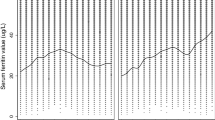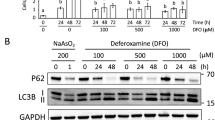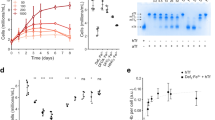Abstract
FLETCHER and Huehns1,2 presented evidence that the two iron atoms bound to the serum iron-transport protein, transferrin are not equally available for the synthesis of haemoglobin by immature red blood cells (reticulocytes). They hypothesised that functional differences between the binding sites may serve to regulate the distribution of iron within the body3. Various studies (cited in ref. 4) have been published since, some of which support and some of which contradict this hypothesis. We devised procedures4 to compare the availability of iron at each site of transferrin for reticulocytes in vitro, as well as to compare the availability of iron in diferric and monoferric transferrin. In the homologous system of rabbit reticulocytes and rabbit transferrin, there was no functional difference between the two sites of diferric transferrin or between diferric and monoferric protein. In the heterologous system of rabbit reticulocytes and human transferrin, however, a difference between the sites of diferric transferrin and between diferric and monoferric transferrin was observed. Those studies have now been extended to the homologous system of human reticulocytes and human transferrin. We found no difference in availability of iron at the two sites of human transferrin and only a slight difference in the availability of iron in monoferric and diferric protein.
This is a preview of subscription content, access via your institution
Access options
Subscribe to this journal
Receive 51 print issues and online access
$199.00 per year
only $3.90 per issue
Buy this article
- Purchase on SpringerLink
- Instant access to full article PDF
Prices may be subject to local taxes which are calculated during checkout
Similar content being viewed by others
References
Fletcher, J., and Huehns, E. R., Nature, 215, 584–586 (1967).
Fletcher, J., Clin. Sci., 37, 273–297 (1969).
Fletcher, J., and Huehns, E. R., Nature, 218, 1211–1214 (1968).
Harris, D. C., and Aisen, P., Biochemistry, 14, 262–268 (1975).
Aisen, P., and Leibman, A., Biochem. biophys. Res. Commun., 32, 220–226 (1968).
Awai, M., Chipman, B., and Brown, E. B., J. Lab. clin. Med., 85, 769–784 (1975).
Awai, M., Chipman, B., and Brown, E. B., J. Lab. clin. Med., 85, 785–796 (1975).
Morgan, E. H., Marsaglia, G., Giblett, E. R., and Finch, C. A., J. Lab. clin. Med., 69, 370–380 (1967).
Cavill, I., and Ricketts, C., Iron in Biochemistry and Medicine (edit. by Jacobs, A., and Worwood, M.), 613–647 (Academic, London, 1974).
Author information
Authors and Affiliations
Rights and permissions
About this article
Cite this article
HARRIS, D., AISEN, P. Functional equivalence of the two iron-binding sites of human transferrin. Nature 257, 821–823 (1975). https://doi.org/10.1038/257821a0
Received:
Accepted:
Issue date:
DOI: https://doi.org/10.1038/257821a0
This article is cited by
-
Transferrins in the metabolism of iron
Chemistry of Natural Compounds (1984)



